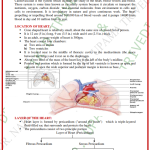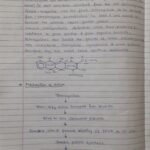THEORIES OF DISPERSION AND
PHARMACEUTICAL DISPERSION (EMULSIONS
AND SUSPENSIONS,SMEDDS) PREPARATION
AND STABILITY
SUBMITTED TO : SUBMITTED BY :
DR. YASMIN SULTANA ASAD ALI
DEPARTMENT : Pharmaceutics IST SEMESTER (Pharmaceutics)
School Of Pharmaceutical School Of Pharmaceutical
Education and Research Education and Research
JAMIA HAMDARD JAMIA HAMDARD
CONTENTS
1. Introduction and classification.
2. Interfacial phenomenon.
3. Wetting phenomenon.
4. Adsorption.
5. Surface active agents.
6. Micellar solubilsation.
7. Solubilisation in pharmacy.
8. Coarse of dispersion systems,
(a)Emulsions (definition, theory, determination of type, emulsifying
agents, stability).
(b) Colloids (definition, types, properties, stability, applications)
(c) Suspension (definition, types, properties, stability, applications)
Including: classifications, desirable quality of acceptable suspension,
Interfacial properties of suspended particles, settling in suspension,
Formulation, flocculating agents, preparation of suspension.
Introduction
• Dispersed systems consist of particulate
matter, known as the dispersed phase,
distributed throughout a continuous or
dispersion medium.
• The dispersed material may range in size
from particles of atomic and molecular
dimensions to particles whose size is measured
in millimeters.
Classification of dispersed systems on the basis of
particle size
Interfacial phenomenon
• The boundary between two phases is generally
described as an interface.
• When one of the phases is a gas or a vapour, the
term surface is frequently applied.
• In pharmacy, interfacial phenomena play an
important role in the processing of a wide variety of
formulations.
• The subsequent behavior of these formulations in
vivo is often governed by an interfacial process.
Wetting phenomenon
• Air may be trapped in the particles of poorly wetted solids
which causes them to float to the surface of the
preparation and prevents them from being readily
dispersed throughout the vehicle.
• Wetting of the particles can be encouraged by reducing
the interfacial tension between the solid and the vehicle, so
that adsorbed air is displaced from solid surfaces by liquid.
• Suitable wetting agents have this effect, but decrease
interparticulate forces thereby affecting flocculation.
Adsorption
• Adsorption, the binding of molecules or
particles to a surface, must be distinguished
from absorption, the filling of pores in a solid.
• The binding to the surface is usually weak
and reversible.
•Just about anything including the fluid that
dissolves or suspends the material of interest is
bound, but compounds with color and those
that have taste or odor tend to bind strongly.
Surface active agents
• Many compounds have structure that contain
two separate regions, a hydrophilic region (water-
liking) which confers on the compound a solubility
in water, and a hydrophobic region (water-hating)
which render the material soluble in hydrocarbon
solvents.
• It is energetically favourable for these materials,
when dissolved, to adsorb at interfaces, orientating
themselves in such a manner that the regions are
associated with the appropriate solvent.
• Such materials are termed surface active agents
(or surfactants).
Micellar solubilzation
• Micellar solubilization can also increase the
solubility of drugs in the gastrointestinal tract.
• The ability of bile salts to solubilize drugs
depends mainly on the lipophilicity of the
drug.
Solubilization in pharmacy
• A wide range of insoluble drugs have been
formulated using the principle of solubilization, some
of which will be considered here.
• Solubilization has been shown to have a modifying
effect on the rate of hydrolysis of drugs.
• Non-polar compounds solubilized deep in the
hydrocarbon core of a micelle are likely to be
better protected against attack by hydrolysing
species than are more polar compounds located
closer to the micellar surface.
1) EMULSIONS
INTRODUCTION
• An emulsion is a dispersion in which the
dispersed phase is composed of small globules
of a liquid distributed throughout a vehicle in
which it is immiscible.
• Vigorous shaking may break one liquid into
globules that become distributed throughout
the other, this condition is only temporary as
separation quickly take place on standing.
• e.g castor oil and water
Classification of emulsions
Based on dispersed phase
Oil in Water (O/W): Oil droplets dispersed in water
Water in Oil (W/O): Water droplets dispersed in oil
Based on size of liquid droplets
0.01 –0.2 mm Microemulsions (Thermodynamically
stable)
0.2 –50 mm Macroemulsions (Kinetically Stable)
Theory of Emulsification
• INTERFACIAL TENSION: Interfacial or surface tension exists when two
phases are present. These phases can be gas/oil, oil/water, or
gas/water. Interfacial tension is the force that holds the surface of a
particular phase together and is normally measured in dynes/cm.
• INTERFACIAL FILM: In interfacial film , an amphiphilic molecules align
it self at water-oil interface in the favorable position such as, –
Oleophilic portion in oil phase. & – Hydrophilic portion in water phase.
e.g. O/W
OLEOPHILIC PART
HYDROPHILIC PART
• For the amphiphilic to be concentrated at
the interface, it must be balanced with the
proper amount of water- and oil-soluble
groups.
• If the concentration of the emulsifier is high
enough, it forms a rigid film between the
immiscible phases, which acts as a
mechanical bar to both adhesion &
coalescence of the emulsion.
Preparation of Emulsion
Dry gum method
Bottle Method
Wet gum method
Step involved to form Primary Emulsion
-In dry gum method the oil is first triturated with
gum & then water is added.
– In wet gum method the first gum triturated
with water to form a mucilage & then oil
added in small quantities.
INSTABILITY OF EMULSION
1Cracking
• In cracking, separation of the disperse phase & continuous
phase.
• Cracking may be caused by any chem., physical or
biological effect that changes the nature of emulsifying
agent or tends to make it less stable.
Causes of Cracking
• Addition of opposite type of emulsifying agent: –
Monovalent soap metals produce O/W type of emulsion &
divalent soap metals produce W/O type of emulsion.
– If monovalent soap added in divalent soap of emulsion or
divalent soap added in monovalent it causes cracking of
emulsion.
• Precipitation or Decomposition of Emulsifying agent: –
Gums, Gelatin & casein are insoluble in alcohol if this solvent
is transferred to prepared emulsion, that time the emulgent
precipitate & cracking was caused.
– Anion emulgent are incompatible with large cations &
cation emulgent are incompatible with large anions.
• By addition of Common Solvent:
– If common solvent was added in prepared emulsion that
time cracking was showed.
– E.g. alcohol is added in turpentine oil liniment,
– alcohol is soluble with turpentine oil, soft soap & water are
soluble in alcohol that time destroying the emulsion
2)Creaming
• E.g. Milk
• Creaming may be defined as the formation of a layer of
relatively concentrated emulsion.
• Creamed emulsion may be made homogeneous again by
shaking, creaming is less serious type of instability than cracking.
• Creaming is undesirable because the closeness of the globules in
the cream favours breakdown of the interface.
Following are ways in which creaming may be minimised:
Reducing the mean size & the size distribution of the
globules
Increasing the viscosity of the continuous phase
Storage in cool place :
3)Phase Inversion
• It is Physical Instability
• In that changes phase O/W to W/O & vice versa.
• it causes, addition of electrolytes or changing phase ratio or by
temperature.
• It can be minimised by, proper emulsifying agent in adequate
conc. & conc. of dispersed phase between 30 to 60 percent.
4)Coalescence
• Coalescence is a growth process during which the emulsified
particles join to form large particle.
• Particularly occurs in O/W systems containing nonionic surfactants
& in W/O system in which electrical effect are negligible.
• So that is the reason, variety of natural gums & proteins used at
low levels & can be used at higher concentration as primary
emulsion.
2) SUSPENSIONS
THEORITIC CONSIDERATION OF SUSPENSIONS
A knowledge of the theoretic considerations pertaining to suspension
technology ultimately help formulator to select ingredients that are
1.Appropriate for suspension preparation
2.That available for milling
3.Mixing equipment
Some theoretic considerations are :
Particle size control
Wetting
Sedimentation
Brownian movement
Electro kinetic
Aggregation
Particle size control:
– Particle size of any suspension is critical and must be reduced within
the range .
-Too large or too small particles should be avoided.
A) Larger particles will:
settle faster at the bottom of the container
B) particles > 5 um impart a gritty texture to the product and also
cause irritation if injected or instilled to the eye
C) particles > 25 um may block the needle
-Too fine particles will easily form hard cake at the bottom of the
container.
SEDIMENTATION:
Sedimentation means settling of particle (or) floccules occur under
gravitational force in liquid dosage form.
Brownian Movement (Drunken walk)
1)Brownian movement of particle prevents sedimentation
by keeping the dispersed material in random motion.
2) Brownian movement depends on the density of dispersed
phase and the density and viscosity of the disperse medium.
3) The kinetic bombardment of the particles by the
molecules of the suspending medium will keep the particles
suspending, provided that their size is below critical radius
(r).
4) Brownian movement can be observed,
5) If particle size is about 2 to 5mm,
6)When the density of particle & viscosity of medium are
favorable.
Electro kinetic Properties Zeta Potential
The zeta potential is defined as the difference in potential between the surface of
the tightly bound layer (shear plane) and electro-neutral region of the solution.
A) As the potential drops off rapidly at b first, followed more gradual decrease as the
distance from the surface increases.
B) This is because the counter ions close to the surface acts as a screen that reduce
the electrostatic attraction between the charged surface and those counter ions
further away from the surface.
C) Zeta potential has practical application in stability of systems containing
dispersed particles.
D)Since this potential, rather than the Nernst potential, governs the degree of
repulsion between the adjacent, similarly charged, dispersed particles.
E) If the zeta potential is reduced below a certain value , the attractive forces
exceed the repulsive forces, and the particles come together.
F) This phenomenon is known as flocculation.
G) The flocculated suspension is one in which zeta potential of particle is -20 to +20
mV.
H)Thus the phenomenon of flocculation and de flocculation depends on zeta
potential carried by particles
Deflocculation and flocculation
Flocculated Suspensions
A) In flocculated suspension, formed flocs (loose aggregates) will
cause increase in sedimentation rate due to increase in size of
sedimenting particles.
B) Hence, flocculated suspensions sediment more rapidly.
C)Here, the sedimentation depends not only on the size of the flocs
but also on the porosity of flocs.
Deflocculated suspensions
A)In deflocculated suspension, individual particles are settling.
B) Rate of sedimentation is slow , which prevents entrapping of liquid
medium which makes it difficult to re-disperse by agitation.
C)This phenomenon called ‘caking’ or ‘claying’.
D) In deflocculated suspension larger particles settle fast and smaller
remain in supernatant liquid so supernatant appears cloudy.
3)SMEDDS (SELF MICRO EMULSION DRUG
DELIVERY SYSTEM)
INTRODUCTION
1. In recent years, much attention has been focused on oral dosage
forms using a self-micro emulsifying drug delivery system (SMEDDS) for
the purpose of improving the solubility and absorption of poorly water-
soluble drugs.
2. SMEDDS consists of a mixture of drugs, oils, surfactants and/or other
additives. Gentle mixing of these ingredients in aqueous media
generates micro-emulsions with a droplet size in a range of 10-100 nm.
3. SMEDDS has been shown to improve absorption of drugs by rapid
self-micro emulsification in the stomach, with the micro-emulsion
droplets subsequently dispersing in the gastrointestinal tract to reach
sites of absorption .
4. resultant small droplet size from SMEDDS provides a large interfacial
surface area for drug release and absorption, and the specific
components of SMEDDS promote the intestinal lymphatic transport of
drugs Oral absorption of several drugs has been enhanced by
SMEDDS
A) OIL PHASE
In order to make SMEDDS systems pharmaceutically acceptable, it is
necessary to prepare such systems by using nontoxic and safe
components. Oil from natural sources and their derivatives, e.g.
triglycerides and fatty acid methyl esters are easily degraded by
microorganism and considered to be harmless to the environment.
The formation of bi continuous micro emulsions with mineral oils has
been intensively investigated in model experiments and for
application in industrial products. An acceptable lipophilic phase for
pharmaceutical uses would be vegetable oils. The extension of a
microemulsion region generally depends on nature of oil. This is due to
differences in oil penetration into the surfactant layer.
Example: Castor oil, Sunflower oil, Olive oil, Seseam oil, Hydrogenated
specialty oils
B) SURFACTANT
A surfactant molecule is formed by two parts with
different affinities for the solvents. One of them has
affinity for water (polar solvents) and the other has
for oil (non-polar solvents). A little quantity of
surfactant molecules rests upon the water-air
interface and decreases the water surface tension
value (the force per unit area needed to make
available surface). That is why the surfactant name:
“surface active agent”.
C) SOLVENTS
Organic solvents such as ethanol, propylene glycol
(PG) and polyethylene glycol (PEG) are suitable for
oral delivery and they enable the dissolution of large
quantities of either the hydrophilic surfactant or the
drug in the lipid base. solvents can even act as co
surfactants in micro emulsion systems. Alternately
alcohols and other volatile co solvents have the
disadvantage of evaporating into the shells of the
soft gelatin or hard sealed gelatin capsules in
conventional SMEDDS leading to drug precipitation.
D) CO-SURFACTANTS
For the production of an optimum SMEDDS, high
concentration of surfactant is required in order to
reduce interfacial tension sufficiently, which can be
harmful, so co-surfactants are used to reduce the
concentration of surfactants. Co-surfactants
together with the surfactants provide the sufficient
flexibility to interfacial film to take up different
curvatures required to form micro-emulsion over a
wide range of composition. Selection of proper
surfactant and co-surfactant is necessary for the
efficient design of SMEDDS and for the solubilization
of drug in the SMEDDS.
FORMULATIONS OF SMEDDS
Drug has to dissolve in to oil phase(lipophilic part) of micro
emulsion.
Water phase is combined with the surfactant and then
cosurfactant is added slowly with constant stirring until the
system is become transparent.
The amount of surfactant and co-surfactant to be added
and the parent oil phase that can be incorporated is
determined with the help of pseudo ternary phase diagram.
Ultra sonicator can finally used to achieve the desired
range for the dispersed phase.
It is then allow to equilibrate.
Gel may be prepared by the addition of the gelling agent
to above microemulsion.
1. THERMODYNAMIC STABILITY STUDIES
Heating cooling cycle
•Six cycles between refrigerator temperature 4⁰C and 45⁰C with storage at each
temperature of not less than 48 h is studied.
•Those formulations, which are stable at these temperatures, are subjected to
centrifugation test.
Centrifugation
•Passed formulations are centrifuged at room temperature at 3500 rpm for 30 min.
•Those formulations that does not show any phase separation are taken for the
freeze thaw stress test.
Freeze thaw cycle:
Freeze was employed to evaluate the stability of formulation.
Thermodynamic stability was evaluated at difference temp. To check the effect of
temp. the formulation was subjected to freeze thaw cycle(-20ºC) for 2-3 days.
Those formulations passed this test showed good stability with no phase separation,
creaming, or cracking.
2. DISPERSIBILITY TEST:
The efficiency of self-emulsification of oral nano or micro emulsion is evaluated by using a
standard USP XXII dissolution apparatus for dispersibility test. Solution Tested: 1ml Medium:
500 ml water Temperature: 37 ± 1 ⁰C.
Paddle speed : 50 rpm
Grade A: Rapidly forming (within 1 min) nano-emulsion, having a clear or bluish appearance.
Grade B : Rapidly forming slightly less clear emulsion having a bluish white appearance.
Grade C: Fine milky emulsion that formed within 2 min.
Grade D: Dull, grayish white emulsion having slightly oily appearance that is slow to emulsify
(longer than 2 min).
Grade E: Formulation, exhibiting either poor or minimal emulsification with large oil globules
present on the surface.
Grade A and Grade B formulation will remain as nanoemulsion when dispersed in GIT. While
formulation falling in Grade C could be recommended for SMEDDS formulation.
3.TURBIDIMETRIC EVALUATION:
Nepheloturbidimetric evaluation is done to monitor the growth of emulsification.
Fixed quantity of Self emulsifying system is added to fixed quantity of suitable medium (0.1N
hydrochloric acid) under continuous stirring (50 rpm) on magnetic hot plate at appropriate
temperature, and the increase in turbidity is measured, by using a turbidimeter.
However, since the time required for complete emulsification is too short, it is not possible to
monitor the rate of change of turbidity (rate of emulsification).
4.VISCOSITY DETERMINATION:
The SMEDDS system is generally administered in soft gelatin or hard gelatin capsules. So, it
should be easily pourable into capsules and such systems should not be too thick.
The rheological properties of the micro emulsion are evaluated by Brookfield viscometer.
The viscosities determination conform whether the system is w/o or o/w.
If the system has low viscosity then it is o/w type of the system
If the system has high viscosity then it is w/o type of the system
5.DROPLET SIZE ANALYSIS:
The droplet size of the emulsions is determined by photon correlation spectroscopy (which
analyses the fluctuations in light scattering due to Brownian motion of the particles) using a
Zetasizer able to measure sizes between 10 and 5000 nm.
6. REFRACTIVE INDEX AND PERCENT TRANSMITTANCE:
Refractive index and percent transmittance prove the transparency of formulation.
The refractive index of the system is measured by refractometer by putting a drop of solution
on slide and comparing it with water (1.333).
The percent transmittance of the system is measured at particular wavelength using UV
spectrophotometer by using distilled water as blank.
If refractive index of system is similar to the refractive index of water (1.333) and formulation
have percent transmittance > 99 percent, then formulation have transparent nature. 33
7.ELECTRO CONDUCTIVITY STUDY:
The SMEDD system contains ionic or non-ionic surfactant, oil, and water.
This test is performed for measurement of the electro conductive nature of system.
The electro conductivity of resultant system is measured by electro conductometer.
In conventional SEDDSs, the charge on an oil droplet is negative due to presence of free
fatty acids.
8. IN VITRO DIFFUSION STUDY:
In vitro diffusion studies are carried out to study the drug release behavior of formulation from
liquid crystalline phase around the droplet using dialysis technique.
9.DRUG CONTENT:
Drug from pre-weighed SMEDDS is extracted by dissolving in suitable solvent. Drug content in
the solvent extract was analyzed by suitable analytical method against the standard solvent
solution of drug.




